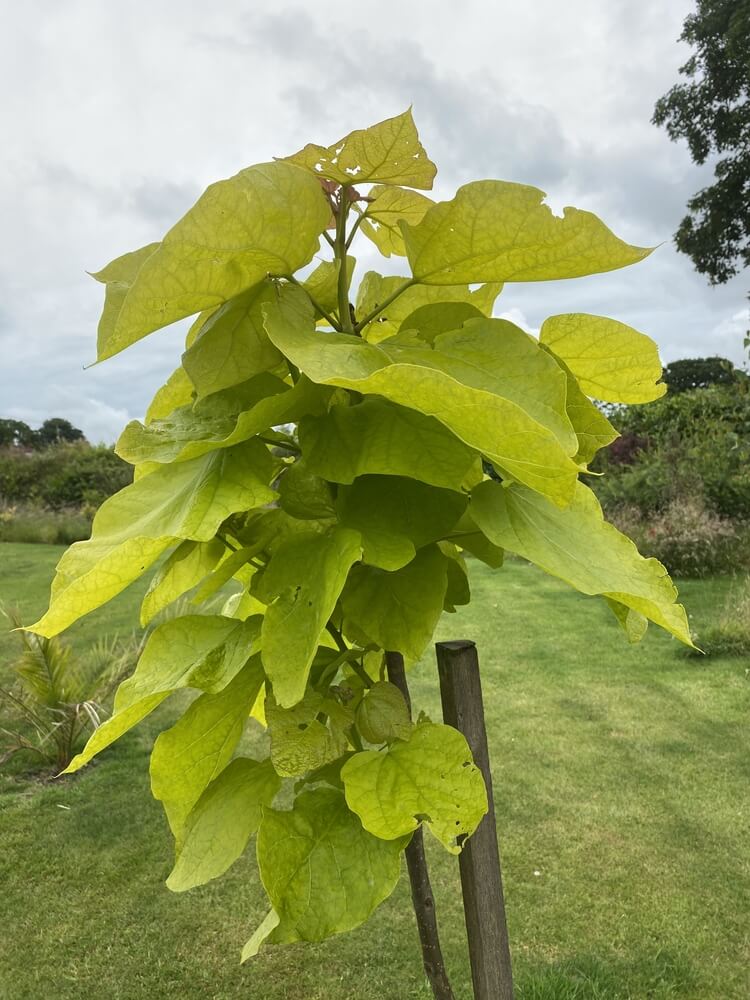Description
Catalpa is a genus of deciduous trees in the family Bignoniaceae. Known for their large heart-shaped leaves and showy flowers, Catalpa species are valued for their ornamental qualities and rapid growth. They are native to North America and are popular choices for urban landscapes and gardens.
Climate: Catalpa species thrive in temperate to subtropical climates. They prefer regions with warm summers and can tolerate a range of conditions, including dry spells. Some species are more cold-hardy than others. Choose species suitable for your specific climate to ensure successful growth.
Watering: Catalpa trees have moderate water needs. Water young trees regularly to establish a strong root system. Once established, they can tolerate dry periods but benefit from regular watering, especially during hot weather and droughts.
Soil Type: Catalpa trees prefer well-draining soil with a slightly acidic to neutral pH. They can tolerate a range of soil types, including clay soil. Good drainage is important to prevent waterlogged roots.
Fertilizing: Catalpa trees benefit from regular fertilization to support their rapid growth and flowering. Apply a balanced, slow-release fertilizer in early spring. Additional applications can be made in late spring and early summer. Avoid excessive fertilization, which can lead to weak growth.
Pest & Diseases: Catalpa trees are generally resistant to pests and diseases. However, they can be susceptible to caterpillar infestations, such as the catalpa sphinx caterpillar. Regular monitoring and proper sanitation practices can help prevent these issues.
Pruning: Catalpa trees require minimal pruning. Remove any dead, diseased, or crossed branches to maintain the tree’s health and appearance. Pruning is generally done in late winter or early spring when the tree is dormant.
Propagation: Catalpa trees can be propagated through seeds, cuttings, or grafting. Seeds can be collected from mature capsules and sown in containers in the fall. Softwood cuttings can be taken in early summer and rooted in a well-draining medium. Grafting onto rootstocks is often used for specific cultivars.
Landscape Uses: Catalpa trees are popular choices for shade trees in larger landscapes, parks, and along streets. They also provide habitat for wildlife and attract pollinators with their showy flowers. Their unique leaves and overall appearance make them stand out in the landscape.
Cultivars: There are several cultivated varieties of Catalpa available, offering variations in growth habit, flower colour, and size. Some popular cultivars include Catalpa bignonioides ‘Nana’ with a compact growth habit, Catalpa speciosa ‘Aurea’ with golden-yellow leaves, and Catalpa bignonioides ‘Purpurea’ with purple-tinted foliage. These cultivars provide options for different design preferences and can enhance the visual appeal of your landscape.


